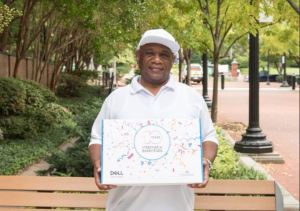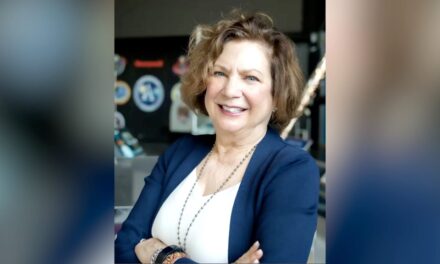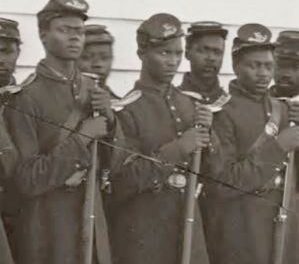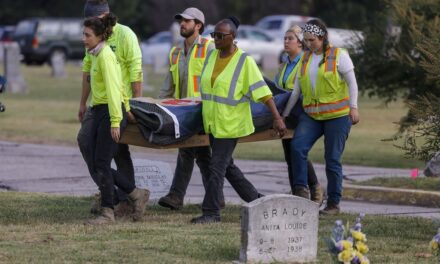
Albert Pannell possessed no digital knowledge before joining Comcast’s Internet Essentials Partnership Program. In working with staff from Johns Hopkins School of Nursing, he learned how to access Zoom and communicate with his relatives. (Courtesy Photo)
By Megan Sayles, AFRO Business Writer
Report for America Corps Member
msayles@afro.com
National Digital Inclusion Week, which runs from Oct. 4 to Oct. 8, recognizes efforts to promote digital equity across the country. In an age where people primarily depend on devices and the internet to learn, shop, pay their bills, access medical records and communicate with family and friends, being disconnected can be detrimental to one’s livelihood.
One demographic that tends to be left behind in terms of digital access is older adults. According to the Pew Research Center, 51% of adults age 65 and older have high-speed internet at home. For seniors age 80 and up that number decreases to 28%. For low-income older adults that statistic is even lower.
Since 2011, Comcast has committed itself to bridging the digital divide in the United States with its Internet Essentials Program. The program provides low-income individuals with internet service for $9.95 a month, free digital literacy training and the option to purchase heavily-subsidized laptops or desktop computers.
“In many areas, especially urban areas, the issue and the challenge is not so much access, it’s more adoption and addressing the affordability piece,” said Kristie Fox, vice president of communication for Comcast’s Beltway Region.
In 2020, Comcast launched the Internet Essentials Partnership Program to accelerate internet adoption. The program involves public-private partnerships that allow organizations to sponsor the cost of internet service for low-income individuals.
While the onset of the COVID-19 pandemic caused much of the focus to center on students engaging in virtual learning, Comcast also collaborated with organizations that work with senior citizens.
One instance of this is its partnership with the Johns Hopkins School of Nursing. After learning about the Internet Essentials Partnership Program, Kelly Gleason, assistant professor at the school, found that it was the most affordable and easy option for low-income community members.
“It created a situation where it became really easy for me to advocate for it to be covered by other Hopkins faculty who regularly engage with community partners,” said Gleason.
One individual that Gleason connected to the program was 66-year-old Albert Pannell, who is a native of Baltimore. Pannell said he had zero knowledge in regard to technology before the Internet Essentials Partnership Program, but after joining he received a free tablet and learned how to use Zoom and access movies and scripture from the Bible.
“When you’re living alone that tablet can help you with a lot of stuff,” said Pannell, who has subsequently promoted the program to members of his church’s congregation.
Gleason and her team coordinated the digital skills training component of the program with the goals of teaching the older adults how to access email, Zoom and wireless connection for their device. She also had them pick a personal learning goal to encourage them to use the tablet more frequently.
According to Gleason, internet access and digital literacy are becoming essential to managing your health. Hospitals and doctors expect that individuals will be able to retrieve lab results, medical records and pay their bills through virtual patient portals.
“As we increasingly assume that people have those resources, we’re letting down the people who don’t quite a bit,” said Gleason.
Help us Continue to tell OUR Story and join the AFRO family as a member – subscribers are now members! Join here!
The post Comcast and Johns Hopkins School of Nursing work to bridge the digital divide for older adults appeared first on AFRO American Newspapers .











